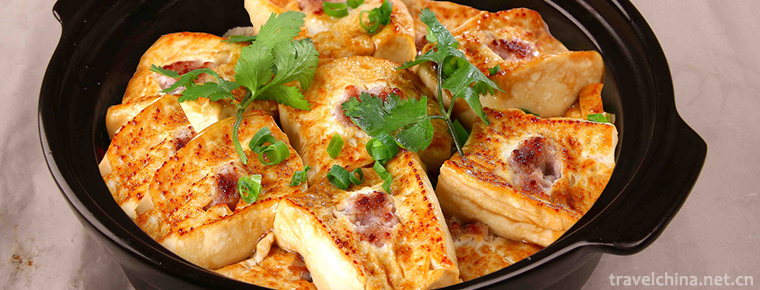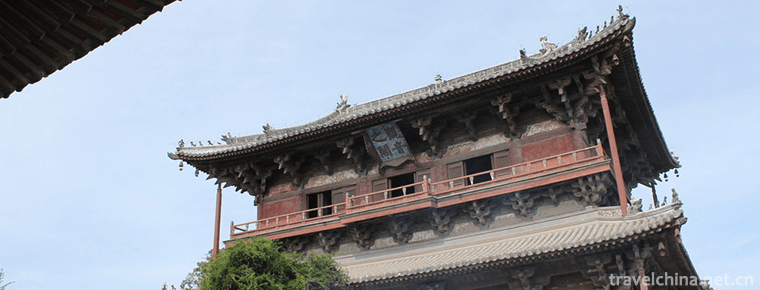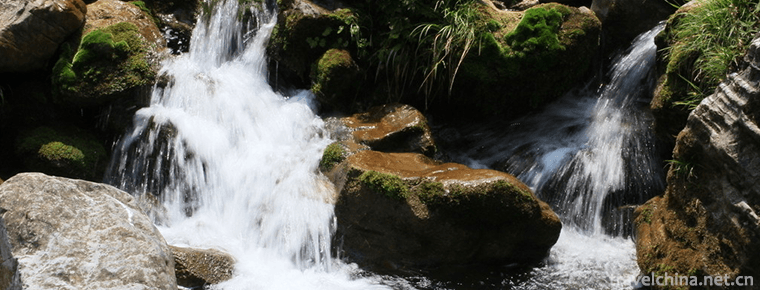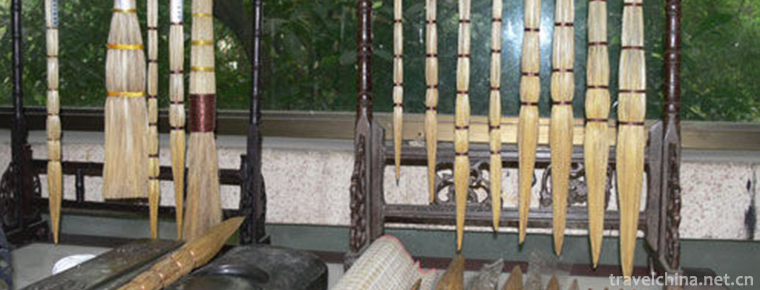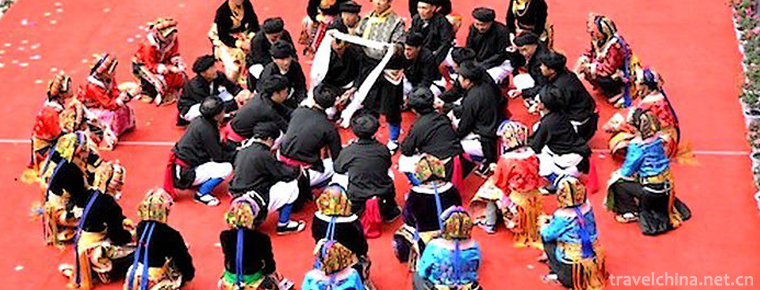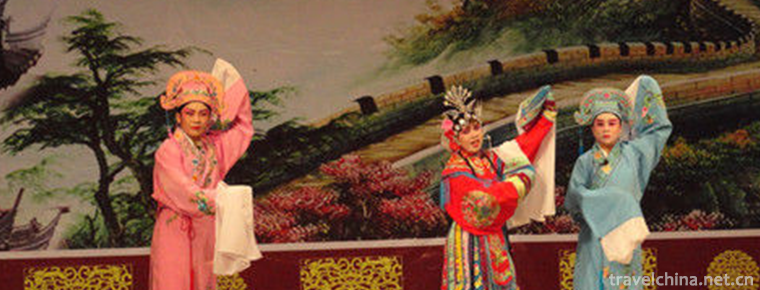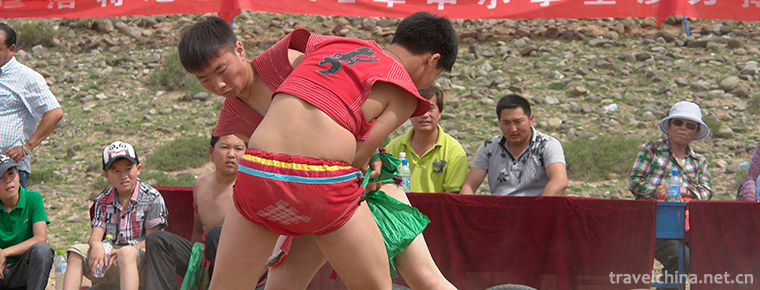Schools of Chinese embroidery
Xihe folk embroidery
Xihe embroidery is also a beautiful scenery. Qiaoniang embroidered their life, wisdom and mood with colorful threads. They embroidered all kinds of exquisite handicrafts by hand, including handmade embroidered pillows, hand embroidered insoles and hand embroidered shoes, among which handmade embroidered pillows are the most prominent.
The common needling methods of embroidery include snatching needle, covering needle, applying needle, random needle, rolling needle and cutting needle; the design theme is mostly people's life and natural beauty here, and the flowers include: red maple, lotus, peony, orchid, rose, sunflower, Narcissus, tulip, etc. Plants are: bamboo, bamboo, blue stone, pine, grass and so on. Animals are: twelve zodiac, dragon and Phoenix, fish, bird, eagle, butterfly, mandarin duck, crane, peacock and so on. The characters are: Chang'e flying to the moon, Nuwa mending the sky and so on. They are of various styles and attractive styles, which are very popular with the masses.
Xihe handmade embroidered pillows have various types, including Liuhe pillow, wedding pillow, ear pillow, cylinder pillow, children's pillow, baby pillow, cervical pillow, etc.Schools of Chinese embroidery
Suzhou embroidery
Suzhou embroidery has a history of more than 2600 years. It has a considerable scale in the Song Dynasty. In Suzhou, there are xiuyifang, xiuhuanong, gunxiufang and xiuxianxiang. Suzhou embroidery in Ming Dynasty has gradually formed its own unique style and has a wide influence. In the Qing Dynasty, the Royal embroidery was mostly made by Suzhou embroidery artists, and the folk embroidery was more colorful. At the end of the Qing Dynasty, Shen Shou first created "imitation embroidery", which is well-known at home and abroad. She has successively received apprentices in Suzhou, Beijing, Tianjin, Nantong and other places, cultivating a new generation.
In the 1930s, Yang Shouyu, director of the painting and Embroidery Department of Danyang regular women's vocational school, founded random needlework, which enriched the needling techniques of Su embroidery. Suzhou embroidery is known for its delicacy and elegance. Beautiful design, quiet color, flexible needling, meticulous embroidery, vivid image. The technical characteristics can be summarized as "flat, smooth, even, harmonious, smooth, fine, dense" eight words.
There are dozens of needling methods, and the commonly used ones are Qi needle, grabbing needle, sleeve needle, net embroidery, yarn embroidery, etc. Embroidery can be divided into two categories: practical products, such as quilt covers, pillow cases, embroidered clothes, theatrical clothes, tapestries, cushions, etc.; the other is appreciation products, including stage screen, hanging shaft, screen, etc. There are a wide range of materials, including flowers, animals, figures, landscapes, calligraphy and so on. The double-sided embroidery "goldfish" and "kitten" are the representative works of Suzhou embroidery. Suzhou embroidery has more than 80 times as a first-class gift of national yuan, which has been exhibited in nearly 100 countries and regions, and more than 100 people have gone abroad to perform embroidery. In 1982, he won the gold cup award of the national arts and crafts Hundred Flowers Award, and the double-sided embroidery "goldfish" was awarded the gold medal in the 56th "Poznan International Exposition" in 1984. In the modern history of Suzhou embroidery, there is an outstanding Suzhou embroidery artist Shen Shou. His works shocked at home and abroad.
Shen Shou's representative works are "evergreen painting", "Ladies painting", "three horses painting", etc.
In addition, Suzhou hair embroidery is also an art treasure. Hair embroidery is an ancient and dazzling pearl in traditional Chinese crafts. According to historical records, it has been spread in the Tang Dynasty. Compared with silk embroidery, it has the characteristics of elegant and elegant, bright lines, clear and strong, wear-resistant and corrosion-resistant, never fade, rich in elasticity, and conducive to collection. In recent years, the price of hair embroidery in the collection industry has been rising. In 2012, Suzhou hair embroidery technology successfully applied for Suzhou "intangible cultural heritage".
hunan embroidery
The general name of embroidery with Changsha as the center. It was developed on the basis of Hunan folk embroidery and absorbed the advantages of Suzhou embroidery and Guangdong embroidery. During the Jiaqing period of the Qing Dynasty, there were many women engaged in embroidery in Changsha County. In 1898, Wu Hanchen, the son of Hu Lianxian, an excellent embroidery worker, opened the first "Wu Caixia embroidery workshop" in Changsha, where his works were excellent and spread all over the country. During the reign of Emperor Guangxu of the Qing Dynasty, Yang Shizhuo of Ningxiang advocated Hunan folk embroidery. He went deep into the embroidery workshop for a long time, drew embroidery manuscripts, and created a variety of needling techniques, which improved the art level of Hunan embroidery. In the early stage, Xiang embroidery mainly embroidered daily ornaments, and then gradually increased works with painting theme. The feature of Xiang embroidery is that it embroiders with velvety thread (untwisted yarn), and the cut silk is meticulous. The pattern of the embroidered piece is realistic. It is often based on Chinese painting, with rich and bright colors. It emphasizes the shade of yin and Yang in color. It is vivid and realistic in shape and bold and unconstrained style. It was once known as "embroidery can produce fragrance, embroider birds can listen, embroidered tigers can run and embroider people can convey spirit". The lion, tiger and other animals are embroidered by Xiang embroidery with special hair needle. The hair is powerful and powerful. In 1982, Xiang embroidery won the golden cup award in the national arts and crafts Hundred Flowers Award.
Guangdong embroidery
Yue embroidery is the general name of Guang embroidery and Chao embroidery, which has a history of more than 1000 years. In the Tang Dynasty, Su jaw's Du Yang zabian recorded that Lu Meiniang, a girl from Nanhai (today's Panyu, Guangzhou), was skillful enough to embroider seven volumes of fahua Sutra on Chi silk. In Tang Dynasty, the level of embroidery in Guangdong was different. During the reign of Emperor Xuanzong of the Tang Dynasty, the Lingnan Jiedu envoy Zhang Jiugao presented exquisite embroidery to Yang Guifei and was awarded three official titles. It can be seen that the highest class at that time appreciated Yue embroidery. By the middle of Ming Dynasty, Guangdong embroidery had become famous overseas because of its convenient coastal trade. In the ninth year of Zhengde of the Ming Dynasty (1514), the Portuguese bought the sleeve pieces of dragon robes embroidered by Guangxiu artists and presented them to the king of Portugal. The king of Portugal was very happy and rewarded with a generous reward. In the 28th year of the Wanli reign of the Ming Dynasty (1600), Queen Elizabeth I of England was very fond of gold and silver thread embroidery in Guangdong. She personally initiated the establishment of a British embroidery trade association to import silk and silk thread from China, and to process and embroider aristocratic clothes. After the British King Charles I succeeded, she further advocated the cultivation of silkworms by the British race, and developed the silk industry and technology in Britain, so that the art of Guangxiu was spread to England Sanshima is praised by western scholars as "a gift from China to the west". Guangdong embroidery is found in museums of Britain, France, Germany and the United States. In the 18th century, Yue embroidery became popular in the British Royal Society and the upper class.
In the early Qing Dynasty, Qu Dajun's Guangdong Xinyu and Zhu Qiqian's cunsutang silk embroidery record all described: as far back as the Ming Dynasty, Guangdong embroidery used peacock feather to weave thread, which made the embroidery golden and emerald, and used horsetail hair to wrap the velvet as the outline line, which made the outline technique of Yue embroidery have better performance; "the needle is finer than the hair, and the writing does not forget the rules Contour pattern, natural and neat ". In the Qing Dynasty, Yue embroidery had a greater development. The Palace Museum is the most representative collection in China. The composition is complex but not disorderly, the color is gorgeous and dazzling, the needle step is uniform, the needle method is changeable, the texture is clear, and the water path is good. There are many kinds of Yue embroidery, including banners, hanging screens, platform screens, etc. practical items include quilt covers, pillow cases, bed lintels, shawls, headscarves, stage curtains and embroidered clothes. Generally, he painted flowers and birds from life, full of decorative flavor, often taking Phoenix, peony, pine and crane, ape, deer, chicken and goose as subjects, and mixed to form a picture. Women's sleeves and skirts are covered with broken branches and flowers, which are very thin and flat. The color matching adopts the color line with strong contrast, which is usually red and green, dazzling and suitable for rendering the happy and lively atmosphere. In the 18th century, the bottom layer of Nasi embroidery was mostly made of sheepskin gold (known as "leather gold embroidery" in Guangdong Province) as the background, which was especially exquisite with the glittering gold. In 1982, Yue embroidery won the golden cup award of the national arts and crafts Hundred Flowers Award for its works such as "the dawn" and "a hundred birds facing the Phoenix".
Shu embroidery
Also known as "Sichuan embroidery". It is the general name of embroidery with Chengdu as the center. have a long history. According to the records of Huayang Kingdom written by Chang Yi of Jin Dynasty, embroidery in Sichuan was well-known at that time, which was as famous as Shu brocade, and was also known as the treasure of Sichuan. During the Daoguang period of the Qing Dynasty, Shu embroidery had formed a professional production. There were many embroidery shops in Chengdu, which both embroidered and sold. The main raw materials of Shu embroidery are soft satin and colored silk. The themes include mountains and rivers, characters, flowers and birds, insects and fish. After preliminary finishing, there are more than 100 kinds of needle methods, such as trocar, halo needle, oblique roller needle, swirl needle, reference needle, shed needle, knitting needle, etc. Varieties of bedding, pillowcases, embroidered clothes, vamp and other daily necessities, as well as Taiwan screen, hanging screen and other appreciation products. It is most famous for its embroidered soft satin quilt cover and traditional product "Lotus carp". The characteristics of Shu embroidery: vivid image, bright colors, rich three-dimensional sense, fine short needles, flat stitches, bright lines, rich changes, with strong local characteristics. In 1982, Shu embroidery won the silver cup award of the national arts and crafts Hundred Flowers Award.
Bianxiu
Bianxiu, also known as "Song embroidery", has developed to a very high level in the Northern Song Dynasty more than 800 years ago. According to the records of Dongjing Menghua, Kaifeng, as the capital of the Northern Song Dynasty, has a "wenxiuyuan" in its imperial palace, which gathers more than 300 outstanding embroidered women in the country to embroider official clothes and decorations for emperors, princesses and dignitaries. Therefore, it is also known as "palace embroidery" or "official embroidery" There was a street called "Xiuxiang" outside the east gate of daxiangguo temple in Kaifeng at that time. It was a place where xiugu embroidery was concentrated and a famous market for embroidery products. Inside and outside the temple, the capital city of ten li was full of Pearl curtain embroidered forehead, skillfully made new clothes, famous embroidery works, competing for brilliance. Tu Long, a scholar of the Ming Dynasty, wrote in his book "Hua Jian" that "the boudoir of the Song Dynasty embroidered paintings, There are landscape figures, flowers and birds on the balcony. The stitches are fine, and the stitches are not exposed. They are made of one or two silks of velvet, and the hair is fine with needles. Therefore, the eyebrows are complete, the velvet color is eye-catching, and the rich spirit is just like that. It is better to set colors and dye than to paint. Because of the skillful needlework, ten fingers of spring wind, you can't go back. " Bianxiu is famous for embroidering famous Chinese paintings and ancient paintings. The embroidery is simple, typical and delicate.
Taking the painting of the river at Qingming Festival by Zhang Zeduan, a painter of the Northern Song Dynasty, as a representative work, there are also embroidered: the painting of Han Xizai's night banquet by Gu Hongzhong in the Five Dynasties, the five cattle painting by Han Fu of the Tang Dynasty, the painting of ladies with hairpin flowers by Zhou Fang, the spring outing of Madame Guo by Zhang Xuan, the six zuns by Lu Lengjia, the step by step picture by Yan Liben, the eighty-seven immortal scroll by Wu Zongyuan in the Song Dynasty, and the great significance of Qing Dynasty The painting of hundred steeds by Li painter Lang shining On the basis of traditional colors and needling techniques, 36 kinds of basic needling techniques were innovated and sorted out by famous modern masters. For example, gun needle embroidered tile, rolling needle, covered needle embroidered landscape and tree, double needle embroidered rope; leisurely needle embroidered animals, as well as overlapping color embroidery, Xi Mi embroidery, Napian embroidery, random needle embroidery and other pictographic needling techniques, can be said to be combined with embroidery art and based on painting art Re creation. Craft varieties are: single side embroidery, double-sided embroidery, double-sided different color embroidery, double-sided three different embroidery.
Longxiu
Qingyang embroidery, also known as longxiu, can be said to be scattered in every corner of Qingyang people's life. In the hot summer, on the roadside and riverside of the mountain countryside, you will see groups of children playing with leather. They are naked, without clothes, and have a flower wrapped belly on their chest. On the red belly, there are all kinds of flowers, birds, insects and fish embroidered with skillful needles. In the sun, it is as red as fire and gorgeous as brocade. After tea, work, rest or chat, you will see those groups of old people hanging on the cigarette pole of an embroidered cigarette bag. If you meet a child who has a full moon, there will be more embroidery. Relatives, friends, neighbors to congratulate their children, all want to take their own embroidered things as gifts. There are tiger head shoes with tiger spirit, lotus hat with red flowers and green leaves, flower wrapped belly with dragon and Phoenix, lion pillow, tiger pillow, goldfish pillow, dragon pillow, Phoenix pillow, etc. These gifts should be placed on the wedding table for everyone to watch and comment on.
In the past, men were more important than women, only for boys. Now it is different. Boys and girls are the same, but men and women are different. The gifts for boys are not embroidered with "expecting a son to become a dragon", "No.1 scholar entering the house", or "immediately sealing Marquis" and "two dragons playing with pearls". There are also animals and plants such as pomegranate, peach, deer, chicken and fish, which symbolize many sons and many blessings. For girls, most of them are "Danfeng Chaoyang", "Lotus born Prince", "fat baby sitting lotus", as well as lotus, peony, Phoenix and birds It means that our descendants will continue to be safe forever. Qingyang embroidery is a typical embodiment of festival folk culture. When you go deep into Qingyang village, you can deeply experience that beauty comes from life, and beauty is life.
nongovernmental
Shanxi folk embroidery
Shanxi Province folk, is the folk embroidery art growth place. Folk embroidery, not only has a long history in Shanxi, but also has a wide range of subjects and rich content, which reflects the local conditions and customs of Shanxi.
Shanxi folk embroidery has its own unique artistic style, with simple patterns, gorgeous colors, simple composition, exaggerated modeling, diverse needlework and exquisite embroidery. Most of these embroidery works from the folk are made by rural working women.
Shanxi embroidery, Xinzhou, Jinnan area of the most influential embroidery crafts.
Xinzhou embroidery
Among the people in Xinzhou, embroidery is quite common among the masses. In Daixian area, the embroidery products are characterized by preciseness, magnificence and elegance; in Wutai County and the surrounding urban and rural areas, the embroidery style is elegant and elegant; in Xinzhou, Dingxiang, Yuanping and other places, the style of embroidery products is relatively simple and beautiful.
Xinzhou embroidery can be roughly divided into clothing, daily necessities and sacrificial objects.
Folk costumes, traditional folk embroidery is mainly used as the decoration of wearing. These decorations are mostly on women and children. In women's clothing embroidery, different parts have different patterns. "Wrist sleeve" (top cuff), usually decorated with a safe, auspicious, Ruyi two-way continuous pattern. "Neckline", embroidery is mostly Ruyi cloud, decorated with flower patterns. "Skirt" is a kind of dress commonly used by women in ancient and modern times. It is often inlaid and embroidered with black, blue and red bottoms. "Coat", embroidery in the chest, commonly used patterns are fish play lotus, peony, etc. "Ding Zi" is often embroidered with patterns of butterflies and lotus flowers. "Shoes" Gang, embroidered with butterfly love flowers, toad palace laurel and other patterns. "Liangguan" is used by women to tie their hair in summer. It is often embroidered with black background, which is very exquisite. Most of the rural children's "tumu" are embroidered with red border, and generally decorated with patterns of lotus bearing noble children and rich and noble Changchun, implying good luck and reproduction. Also embroider five poisonous insects, in order to take poison not close to the meaning. The "Bibs" on boys are often embroidered with patterns of two tigers, two lions and five blessings holding longevity. The "Bib" on the girl is embroidered with patterns of five butterflies holding flowers, five lotus sitting children and five fish playing with lotus. In winter, the earmuffs are peach shaped and often embroidered with auspicious animals, flowers and birds. "Children's shoes", boys are mostly tiger shoes, with tiger head in front, tiger feet on the side and tiger tail at the back. In the front embroidered with a Green Toad named toad shoes, contains the idea of "toad palace lost laurel money landing". In Xinzhou village, there are pig shoes, dog shoes, etc., which are related to local customs. Girls' shoes are the same as boys' shoes, but the embroidered patterns in front of the shoes are auspicious, cheerful and decorated with flowers and birds with implied meanings.
Daily necessities: Xinzhou area, common pillow flowers, tiger pillow. Tiger pillow and double headed tiger, human face head tiger, tiger head fish tail, and Toad pillow. These pillows are exquisitely sewn with unique patterns and shapes. It is not only a child's pillow, but also a children's toy.
"Masonry flower" is a variety of daily necessities made by women in Xinzhou area according to shape with various color rags. Like cushions, schoolbags, horse sets, etc.
"Insole" is often used as a gift given to her fiance by unmarried young women. It is often embroidered with patterns such as boundless Fuhai, everything goes well, lotus boy and so on.
"Purse" can be used to hold money and cigarettes. In general, "purse" embroidery is more delicate, often used as a keepsake for men and women to set love, and often women give it to men.
In addition, when the traditional festival, many places in Xinzhou territory also embroider some festival articles for children.
On the Dragon Boat Festival, mother embroidered grain "sachets" for her children.
At ordinary times, there are also "pillows" embroidered for old people to sit on; seat accessories "cushions" made by various techniques of embroidery, cutting and building flowers; and embroidered "car curtains" and "car clothes" decorated on cars and sedans for wedding.
Sacrificial objects: this kind of embroidery products are often used in the spirit Hall of the ritual of dry sacrifice and sweeping, the dress curtain of the offering table in the temple, and the curtain curtain of the shrine, etc., decorated with exquisite embroidery such as dragon, Phoenix, crane, Fulu Shouxi, light and dark eight immortals. What's more, the coffin cover used for the funeral ceremony and the embroidery on the "shouzai" and "shouku pants" of the dead people are very particular about the materials and embroidery work.
Jinnan embroidery
In the rural areas of southern Shanxi, people's daily necessities and clothing are mostly decorated with embroidery. For example, the neckline, cuff, skirt, shawl, hat, shoes and quilt cover, pillow, Xizhang, Shouzhang, table circumference, chair cushion, etc., all have different patterns of embroidery patterns.
Folk embroidery in southern Shanxi is common in Linyi County, Wanrong County, Xiangfen County, Hongdong County, Jixian County, Linfen City and Yuncheng City. Most of the embroidery patterns in these places are popular among the people, such as peacock opening the screen, magpie climbing plum, pine and crane prolonging the year, two dragons playing with pearls, Phoenix peony, etc., which are the general themes of folk embroidery in southern Shanxi. And fruits and vegetables, birds and animals, mountains and rivers, pavilions and pavilions are the most common embroidery styles in life.
Most of the folk embroidery in southern Shanxi comes from the hands of ordinary rural women. This traditional embroidery technique is often inherited through family transmission and mutual communication. Girls here, influenced by their families when they were young, began to learn embroidery. With the growth of age, embroidery has naturally become an important art activity in their growth. They accumulated experience and skills in practice, and under the influence of their elders, they created new patterns independently from imitation, forming a unique style of folk embroidery in southern Shanxi.
The author of folk embroidery in southern Shanxi is good at using a variety of techniques to express his own ideas. Some realistic, some romantic, some exaggerated, creating a myriad of decorative and rich local flavor embroidery crafts.
Lingbao folk embroidery
Lingbao folk embroidery has been passed on for generations and developed and innovated continuously. It has gradually formed its own unique local style. It can be summarized as follows:
Rich and diverse, meaning auspicious
Lingbao's folk embroidery is mostly practical. All daily necessities and clothes (mainly women and children) are decorated with embroidery. Such as the cuff, collar, skirt, apron, curtain, quilt surface, curtain edge, children's hood, handkerchief, sole of socks and so on. These objects are decorated with auspicious patterns with different meanings, which show women's blessing to their relatives and yearning for a better life.
The patterns of Lingbao folk embroidery are usually symbolized by festivity and auspiciousness. Or through homophony with the same pronunciation. Express good wishes for life. It integrates the appreciation habits of the masses and permeates the folk customs of western Henan. For example, "Lotus gives birth to a noble son", "magpie ascends the plum blossom", "Qilin gives birth to the child", "mandarin duck plays in the water", "lotus flower in parallel", "Phoenix plays with peony", "carp wears Lotus", "birds face Phoenix", "lion rolls Hydrangea", "Phoenix plays peony", etc.
Spread love and express maternal love
Lingbao is also the hometown of opera art. Various folk operas, such as Daoqing, Henan Bangzi, and shadow play, are deeply loved by the local people. Therefore, the plot, clothing, color and character modeling in folk opera and shadow play art are directly or indirectly transplanted into folk embroidery. The most prominent contents are love stories, such as "picking up jade bracelets", "the edge of the cabinet", "Liang Shanbo and Zhu Yingtai", which are all elaborately embroidered on the purse, pillow top, door curtain, curtain, quilt surface and bed edge. The male and female figures embroidered out are simple and pure in image and bright in color, which reposes the girls' happy mood of love life and happy marriage. The children's hats, purses, cloth tigers and fragrant cloth bags embroidered by women give their children all their mother's love.
It is closely related to folk culture
In Lingbao County, according to different seasons and fashions, women embroider embroidery and toys with different connotations and contents according to the two major events of marriage and love and children's health. The wedding of a girl is a great joy, so she must be "blue satin shoes, embroidered with red flowers, after the door on the master.". The bridegroom and bride's new house must be decorated in a red and festive way. What is it like? "Mandarin duck pillow, dragon and Phoenix tent, red silk curtain embroidered Phoenix.". The bride's wedding watch is an exquisite work of art, as evidenced by folk ballads: Wang Xiaojiao as a bride, busy and busy with embroidery; first, after embroidering the front, peony is rich and noble; second, after embroidering the four corners of the table, colorful clouds float everywhere; third, after embroidering Luo shirt, magpie ascends plum to send auspicious; fourth, after embroidering lotus, husband and wife love each other happily; fifth, after embroidering dragon and Phoenix, flying with each other Yang.
The "full moon" of women's childbirth is also very grand. Grandma's home to give tiger head boots, tiger head hat, embroidered belly, Xianggong hat (all inseparable from embroidery). May "Dragon Boat Festival" is an important festival of Han nationality. The folk song says: "the Dragon Boat Festival in May is red in the sun. Make a sachet to drive away poisonous insects." The big girls, little daughters-in-law and skillful mother-in-law in Lingbao rural areas worked together to embroider various kinds of "fragrant cloth bags", such as "Eight Immortals", "twelve zodiac animals", "Monkey King", "carrying feet baby", "baotao baby", as well as "Jixin", "Shoutao", "Buddha's hand", "Butterfly", etc. Sachet filled with Atractylodes, Angelica dahurica and other aromatic materials, can not only repel mosquitoes, flies and insects, but also has a strong aroma. The girls embroidered it carefully to give it to their lovers as a token of love. The mother embroidered them carefully to protect their children's safety and health.
The traditional techniques of embroidery are fully preserved and inherited
"Needle embroidery" and "lingzisuo" are representative of "folk embroidery". In addition, the commonly used needling techniques include "wrapping needlework", "Nasha embroidery", "flat needling", "Panjin", "mending embroidery" and so on. Among them, the techniques of "stretching flowers" and "mending embroidery" are particularly noticeable. Stretch flower is to use needle to lead single line, Liao Liao Liao number of needles as radial, embroidering dynamic flowers, although it is an auxiliary technique, but it plays a key role in embroidery. This kind of needling is usually used on cloth toys. For example, a small flower is stretched on the forehead and two ribs of the majestic tiger, which makes the fierce lion tiger show a bit of naive attitude, and the image is very cute.
"Mending embroidery" is more widely used in embroidery. Its characteristic is that it can make the embroidered objects produce a relief effect. "Bu Xiu" is subdivided into the following types:
The technique of "filling embroidery" is similar to that of "overlapping embroidery". It uses cloth, silk or other materials to cut the required patterns, and then fills in the base material with cotton, and then sews the edge around the lace of the pattern firmly, so as to make the pattern protrude and have a three-dimensional effect. In the black patterns set off a colorful pattern, strong contrast, bright, root effect. This kind of embroidery is often used in embroidering insoles, sock soles and other daily necessities.
This kind of embroidery technique is complicated. The method is to paste the cut original piece piece by piece with cloth bag, then paste it onto the base material (the color of the base material is still mainly black and blue), and then use various color lines to embroider with flat needle from the center of the pattern to the outside. When embroidering, a thin line is evenly left at the edge of the pattern, and the white outline is very unique against the colorful pattern substrate.
Qinghai Folk Embroidery
The history of Qinghai embroidery can be traced back to ancient times. With the opening of the South Silk Road, Princess Wencheng and Princess Jincheng successively went to Tibet in the Tang Dynasty, and Princess Honghua married the king of Tuguhun in Qinghai Province. Silk from the Central Plains came into being. People began to decorate themselves with embroidery, beautify their lives, convey friendship and express their feelings. This folk art has become an indispensable part of people's life and has been handed down from generation to generation Exhibition.
Qinghai embroidery is widely used, with rich varieties and various patterns. From a comprehensive view, all kinds of embroidery can be roughly divided into four types: one is practical, mainly including shoes, socks, belt, braided tube and pillow, which are the entity of embroidery; the second is ornamental category, mainly including purse, collar, sleeve, purse, pocket piece, etc.; the third is etiquette category, mainly including purse, pen bag, belt and longevity The fourth is religious articles, which use embroidery to shape Buddha statues and decorate temples and halls. In fact, many things are both practical and ceremonial ornaments, so it is difficult to distinguish them strictly.

-
Hakka stuffed tofu
Hakka-brewed tofu, also known as minced meat-brewed tofu and Dongjiang-brewed tofu, is one of Hakka's famous dishes and is said to be related to....
Views: 126 Time 2018-11-02 -
Tianjin Dule Temple
Dule Temple, also known as the Great Buddha Temple, is located in Jizhou District, Tianjin, China. It is one of the three remaining temples of Liao Dynasty in China and one of the famous ancient build.
Views: 187 Time 2019-01-08 -
Shuimogou Scenic Area
Shuimogou Scenic Area, also known as Shuimogou Park, is named after Shuimogou in the scenic area. It is located in the eastern suburb of Urumqi, Xinjiang. Around 2000.
Views: 364 Time 2019-02-13 -
Yalu River Scenic Spot
Yalu River Scenic Spot is located in Dandong City in the middle and lower reaches of Yalu River. It is 210 kilometers long from Hunjiang Estuary in the East and from Dadong Port in the west.
Views: 203 Time 2019-02-27 -
Dragon Pen Making Skills of White Shamao
The craftsmanship of the Dragon pen of Baishamao was originated by Chen Baisha, a famous calligrapher. It has a history of more than 500 years. Made of Maotao, a special product of Guifeng Mountain.
Views: 281 Time 2019-04-03 -
Bo Ba Shen en
Bobassengen is a unique folk large-scale narrative mass pot village dance created by Ganbao Tibetan Village in Jiarong Tibetan area, Lixian County, Sichuan Province. "Boba" .
Views: 389 Time 2019-04-04 -
Taoist Drama
Taoist sentiment is a category of traditional Chinese folk art. It originated from Taoist songs such as Chengtian and Jiuzhen in Tang Dynasty. The Southern Song Dynasty began to accompany with fishing.
Views: 269 Time 2019-04-25 -
Sharipol wrestling
Shaliboer style wrestling is a national traditional sports event originally created and retained by the Weilat Mongolian people. It is one of the main sports events in the Uznada Mu Grand Event in Ala.
Views: 146 Time 2019-06-12 -
Thousand Buddha Cliffside Sculptures
Qianfo cliff, located 4 kilometers north of Guangyuan City, on the East Bank of Jialing River and on the ancient Shu Road of Jinniu, has a long history and exquisite carving skills. The grottoes began in the late Northern Wei Dynasty, flourished in the Tang Dynasty and ended in the Qing Dynasty. After thousands of years.
Views: 340 Time 2020-11-08 -
Danba pig leg
Xiang Pigs are mainly green fodder. They never feed artificial feed. They graze with cattle and sheep all year round. They have long mouth and small ears, narrow head, straight forehead, narrow body and protruding back, strong limbs and fast running..
Views: 234 Time 2020-12-06 -
Flag dress of Qing Dynasty
In the strong feudal ethical atmosphere of the Qing Dynasty, it is impossible for women to show their curves as modern. In the Qing Dynasty, the cutting system of flag dress always adopted straight line, and the chest, shoulder, waist and buttocks were .
Views: 64 Time 2020-12-11
